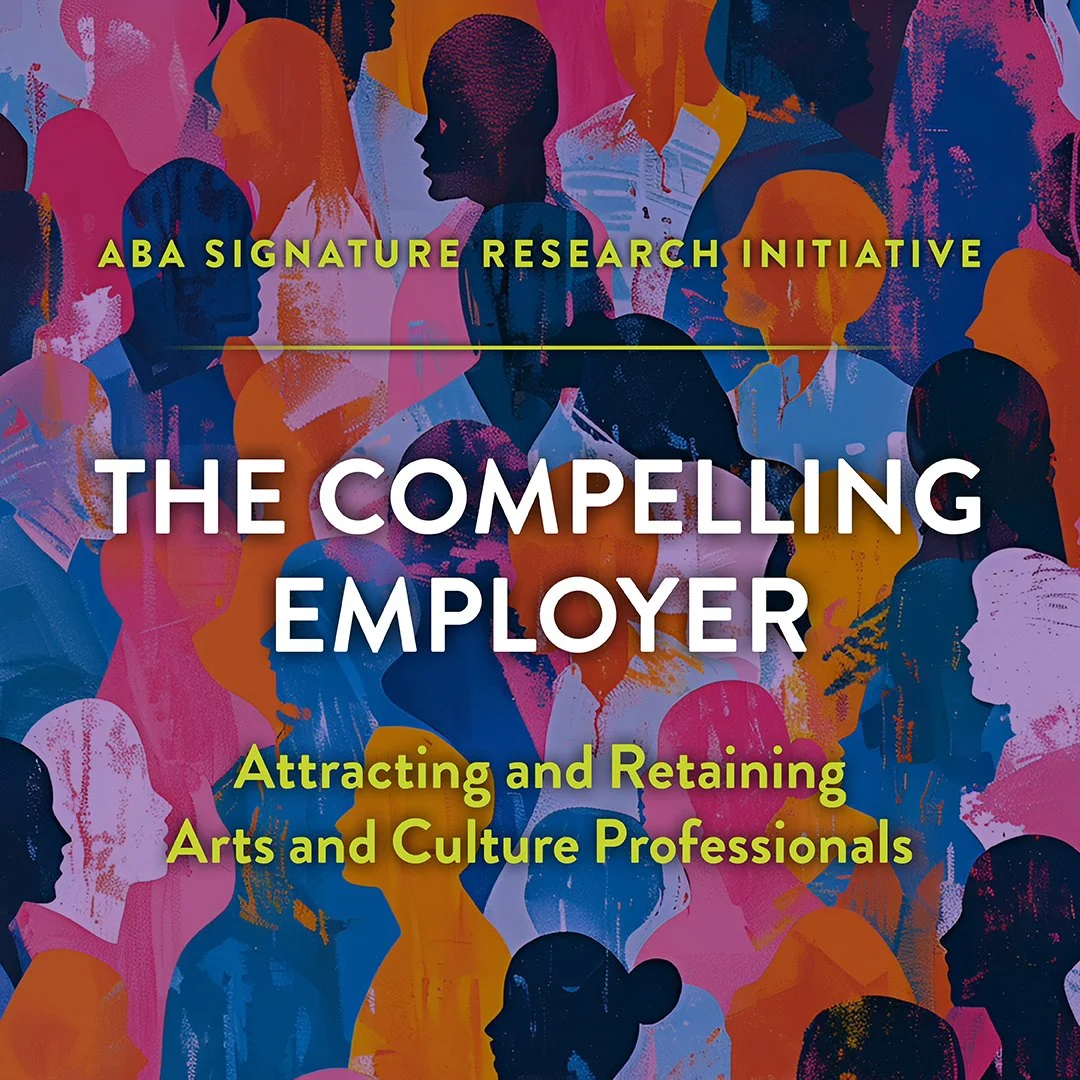Our latest ABA Executive Benchmark explored HR policies, trends and practices at arts and cultural organizations.
Board Governance
The Compelling Employer: Attracting and Retaining Arts and Culture Professionals
This season ABA is launching The Compelling Employer, a groundbreaking research initiative examining the employment preferences of arts and culture employees across genres and geographies. This work will build on ABA’s 2022 work on The Compelling Offer. The pandemic may be behind us, but staff acquisition and retention remain core industry-wide concerns. ABA is revisiting this initiative to understand how staff preferences have changed and what organizations can do to attract and retain high performers.
Our Compelling Employer survey uses conjoint analysis (also known as trade-off analysis) to give arts and culture leaders a much clearer picture of what employees want in a job, and what they are willing to trade off to get it. This newly updated survey will seek to understand what staff value in their managers, pay structures, culture and office environments. In addition, we will profile best practices in improving manager quality, shifting to pay for performance, and cultivating culture change from both inside and outside the arts and culture industry.
HR Policies & Workplace Morale
Internal Communications
2024 Forecasts
Artistic Planning
Finances and Reporting
Arts and Cultural Fundraising
Racial/Ethnic and Gender Representation
Board and Governance Practices
As we shift into the second half of the calendar year, we wanted to learn from arts and cultural leaders about the state of their current governing boards, the impact of their board fundraising and any potential plans to change governance practices to further the impact and performance of organizational trustees.
Staff Morale & HR Policies
As organizations resume the full scale of their operations with ongoing economic and audience attendance pressures, the state of staff wellbeing and work-life balance has come back to the fore. Our latest Arts Executive Benchmark asked arts leaders to benchmark themselves about the current state staff morale and turnover rates, and adjoining HR policies and practices to support wellbeing and avoid the risks of burnout.
Remote Working Policies
As hybrid work becomes more of a norm, questions about how to manage remote work policies have come to the fore, including which policies work best and what the actual impact is of remote work on staff engagement, retention, and productivity. Our latest Arts Leader Survey asked arts leaders to benchmark themselves on how they are handling their workplace policies, especially around remote work and other flexible models, and what results those policies have yielded.
Compensation and Talent
As the end of the year draws near, we want to understand how arts organizations have fared in terms of their overall staff retention and hiring practices over the last 12 months, as well as perceptions around talent, compensation policies, and workplace culture. Our latest Arts Leader Survey asked arts leaders to benchmark themselves on overall impressions of the hiring landscape, staff composition, shifts in talent qualifications and requirements, and any new processes implemented to improve work environment and pay.
The Compelling Employment Offer: Understanding What Really Matters to Arts Professionals
At a time when the labor market is heating up, arts organizations must find ways to resonate better with the needs and expectations of employees in order to build employment offers capable of competing in a tight labor market.
The Advisory Board for the Arts used conjoint analysis (also known as trade-off analysis) in order to give arts leaders a much clearer picture of what employees want, and what they are willing to trade off in order to get it.
Governance Practices
As many arts organizations look to the end of their season and upcoming fiscal year budgets, questions around the structure of governance boards, its various levels of trustees and members, and fundraising objectives have come to the fore. Our latest Arts Leader Survey asked arts leaders to benchmark themselves on their governing board's term durations and reappointments, written procedures and policies, giving requirements, and existing committee types in place.
Flexible Work Policies
Arts organizations are increasingly offering flexible work policies to staff, but some jobs are only able to be done in the office. Our latest Arts Executive Poll asked arts leaders to benchmark themselves on how they are implementing digital strategies moving forward and their priorities for digital programming, monetization targets, resources, equity of flex policies, and new technologies.
Board Governance
In the last 18-months arts organizations have faced extreme challenges from the global health crisis to social and racial reckoning. Constituents have demanded change and accountability at all levels of the arts organization, especially in governing boards. Our latest Arts Executive Poll asked arts leaders to benchmark themselves on the state of board policies and structures, recruitment priorities, and other initiatives to diversify governing boards.
Hot Topics of 2022
With arts organizations navigating the new year and its unique challenges amidst the ongoing pandemic, our latest Arts Executive Poll asked arts leaders about top-of-mind priorities, from setting vaccine requirements in response to COVID-19 variants to benchmarking subscription and ticket sales this season.
Future Priorities in Arts Organizations
As arts organizations safely reopen their doors this fall, arts leaders must leverage this unique moment of return. To help think forward to competing stakeholder demands in a post-pandemic environment, our recent Arts Executive Poll surveyed leaders at arts organizations to understand how they are strategizing for the long-term future.



